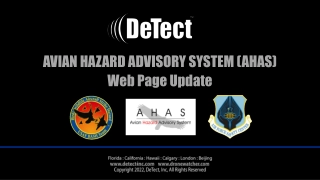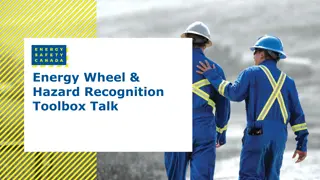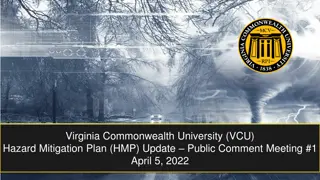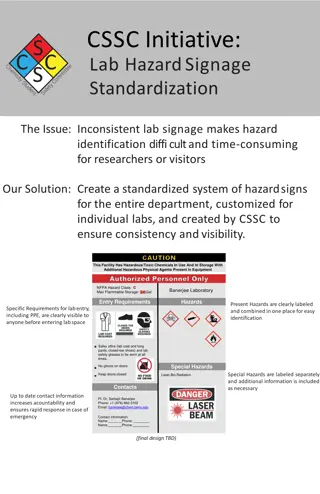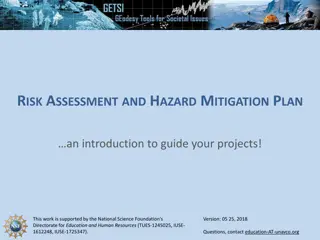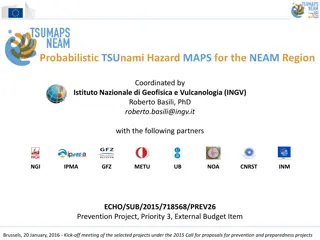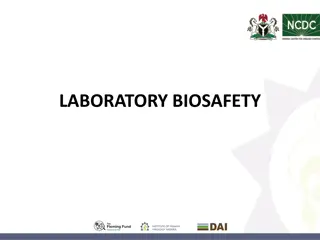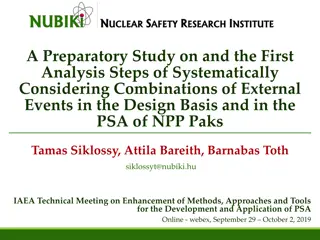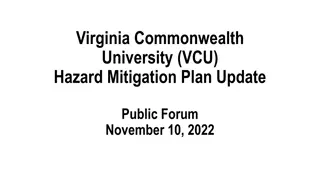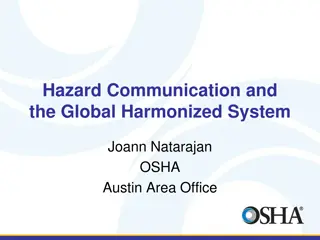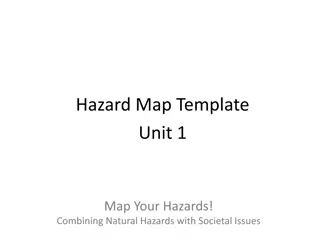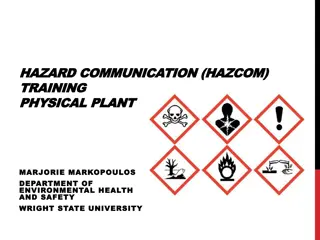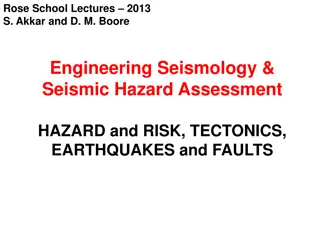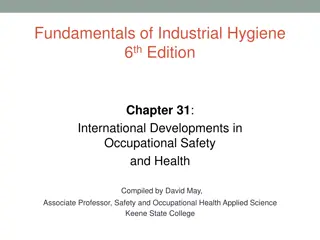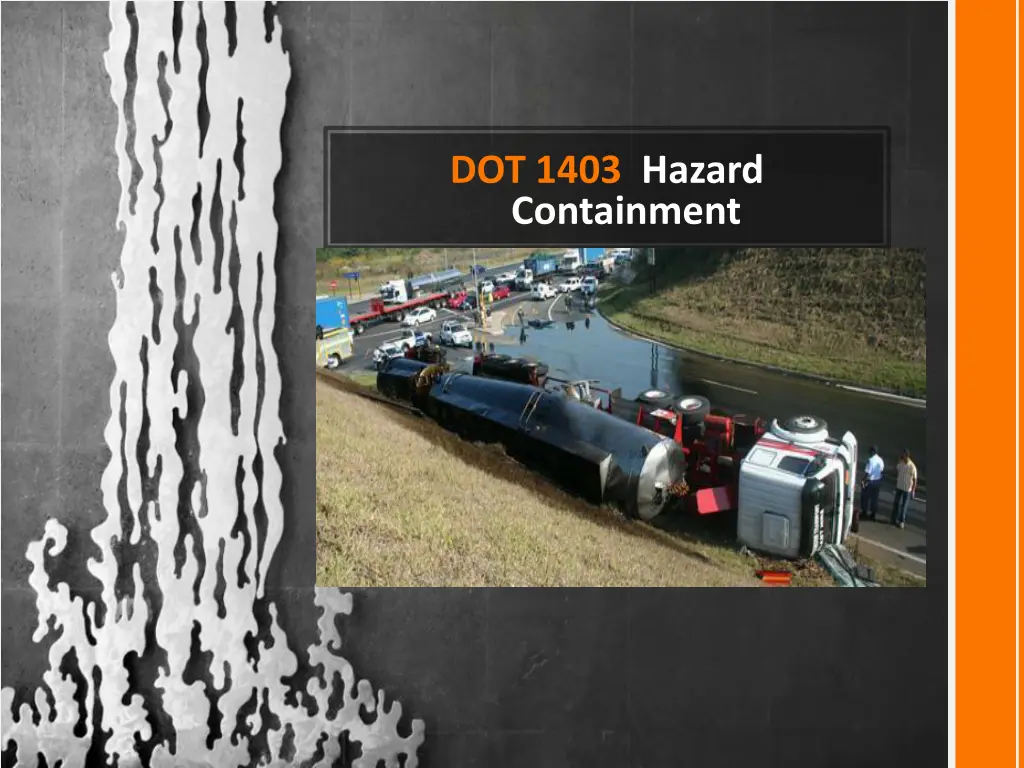
Hazard Containment and Chemical Emergency Response Guidelines
Learn how to contain hazards and respond to chemical emergencies involving hazardous materials like DOT 1403. Understand the importance of hazard identification, elimination of ignition sources, and isolation of accident scenes for effective spillage control.
Download Presentation

Please find below an Image/Link to download the presentation.
The content on the website is provided AS IS for your information and personal use only. It may not be sold, licensed, or shared on other websites without obtaining consent from the author. If you encounter any issues during the download, it is possible that the publisher has removed the file from their server.
You are allowed to download the files provided on this website for personal or commercial use, subject to the condition that they are used lawfully. All files are the property of their respective owners.
The content on the website is provided AS IS for your information and personal use only. It may not be sold, licensed, or shared on other websites without obtaining consent from the author.
E N D
Presentation Transcript
DOT 1403 Hazard Containment
Hazard Containment Hazardous materials have become crucial elements of the growth and development of industries and crucial sectors of the economy. In a scenario where a truck with a DOT 1403 placard overturns, there is potential risk for catastrophic effects in the surrounding environment as well as human beings. Taking into consideration that the control center is 10 miles away, it may take 10 minutes for the earliest chemical emergency response teams to arrive.
Hazard Identification The first and most important thing to do is to identify the chemicals and/or substances that are involved in the accident. The DOT Placard 1403 indicates that this is a Class 4.3 Calcium cyanamide with more than 0.1 percent of calcium carbide. The second stage is to clear the accident scene of any survivors and/or people. The driver would be directed to immediately put pout their cigarette and move to beyond half a mile (800 m) from the scene of the accident.
Source of Ignition All sources of ignition have to be eliminated from the scene of the accident. DOT 1403 placard substances may potentially be ignited by heat, flames or sparks. The driver posed a potential risk through his cigarette. The 5 gallon buckets found in the truck also have to be eliminated. The small fire is an issue of concern and should be quickly put out. This is because Dot 1403 placard substances can be ignited by flames, sparks or heat.
Source of Ignition (cont.) The fire, if left unchecked would gradually raise the temperatures around the container, eventually igniting the substances into a fire or a potential explosion.
Isolation of Accident Scene & Spillage Control Isolation of the accident area is critical. A buffer zone can be quickly created around the area using the sand from the environment. Spillage and leakage of the material poses high risks. Sand is an effective tool in achieving this with minimal risk. This procedure requires an intricate and extensive quick search throughout the lower side of the track. Any signs of leakages should be muffled with mound of sand available.
Tank/Container Cooling Cooling of the tanks is integral in maintaining the substance and container temperature at low and acceptable levels. However, this can only occur well after the fire has been put out. Water can then be carefully flooded to container the temperature of the container, and in return the temperatures of the substances within the container. Using the sand, gulley and trenches can be created to control the flow of water around the areas.
First Aid Immediately after the fire has been put under control and the container cooled to reasonable temperature levels, first aid can be administered to the driver. Firstly, the driver s eyes are checked for contact lenses. If present, they are removed and the eyes with a normal saline solution. Any affected areas of the skin are flooded with water while ensuring all contaminated clothing is removed. Once the driver is at a safe distance away from the scene, they would be encouraged to take deep breaths of fresh air.
Important Things to Consider During this whole process there are a number of care tips that have to be observed. In order for a successful emergency operation, safety standards by those involved in the procedure is paramount. It is important that the individual involved in the emergency operation stay upwind at all times. It is also important to note that the Class A fire extinguisher cannot be employed in this scenario.
References CAMEO Chemicals. (2015, March). UN/NA 1403. Retrieved from CAMEOChemicals.noaa.gov: http://cameochemicals.noaa.gov/unna/1403 Centers for Disease Control and Prevention. (2007, September). NIOSH Pocket Guide to Chemical Hazards. Retrieved from CDC.gov: http://www.cdc.gov/niosh/docs/2005-149/pdfs/2005-149.pdf EPA. (2015, February). MARPLOT Software. Retrieved from EPA.gov: http://www2.epa.gov/cameo/marplot-software National Environmental Agency. (2015, January 20). Hazardous Substances. Retrieved June 18, 2015, from National Environmental Agency: http://www.nea.gov.sg/anti-pollution-radiation- protection/chemical-safety/hazardous-substances

